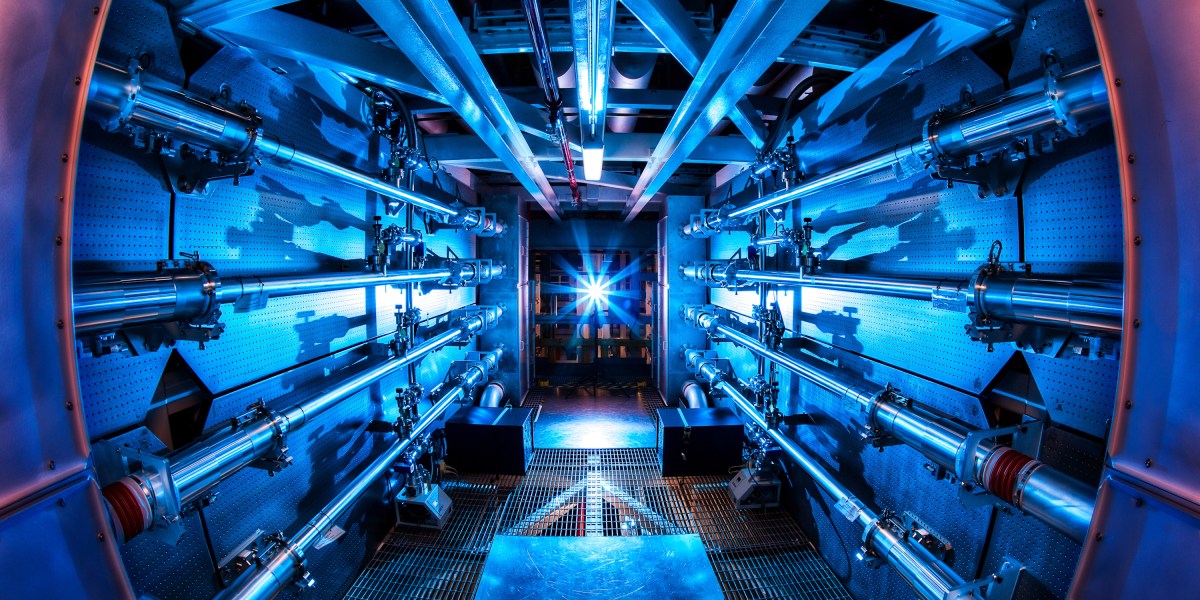
The advance demonstrates the basic viability of fusion energy, which researchers have been chasing since the 1950s. But the scientific experiment required the world’s most powerful lasers and is not an immediately practical route to fusion power. Many more scientific and engineering breakthroughs will be needed to take fusion from a lab experiment into a commercial technology that could provide reliable, carbon-free energy to the grid.
In fusion reactions, whether in a reactor or the core of a star, atoms are slammed into each other until they fuse, releasing energy. The goal of fusion energy is to get more energy out of the fusion reaction than what’s put in to energize and hold the fuel in place, in a controlled way. Until now, that has never been demonstrated.
The fusion reaction at NIF achieved it, generating 3.15 megajoules of energy, more than the 2.05 megajoules provided by the lasers used in the reactor. Last year, the same facility produced about 70% of the supplied energy to the reaction by the lasers. The lasers require more energy to run than what they provide to the reactor, but even seeing net energy gain within the system is a significant milestone.
“This puts a lot of wind in the sails of the community,” says Anne White, head of nuclear science and engineering at MIT. But, she adds, it doesn’t mean that we’re going to see fusion power on the grid tomorrow: “that’s not realistic.”
The laboratory uses the world’s largest and most powerful laser in an approach to fusion called inertial confinement.
While inertial confinement is the first fusion scheme to produce net energy gain, it’s not the most likely path forward for any possible commercial fusion efforts. Magnetic confinement, specifically a donut-shaped reactor called a tokamak, is considered by many fusion scientists to be the leading path forward.
The net gain seen in the inertial confinement experiment doesn’t translate back to other approaches to fusion energy, like a tokamak. The physics and engineering that go into getting there are different across different concepts, says White.
